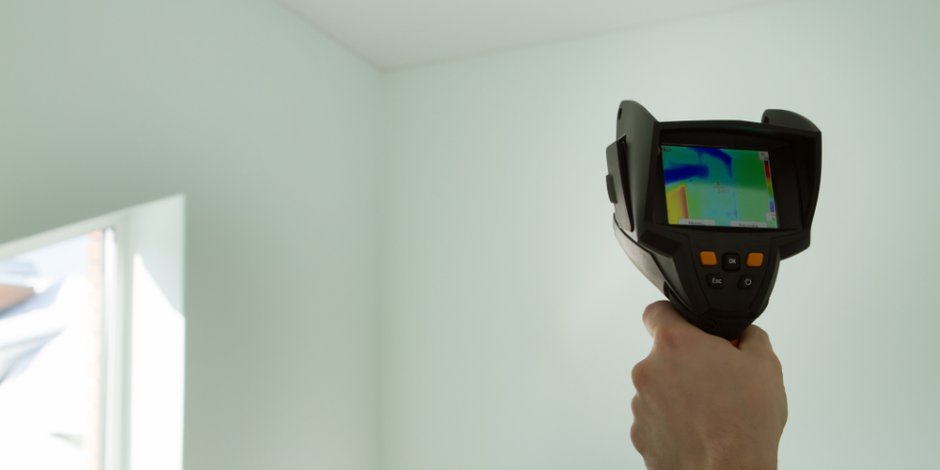
If you’ve heard anything about scheduling a home energy audit for your Northern Virginia, Maryland, or Metro DC area home, you’ve likely heard it’s the smart first step to take before paying for expensive home improvements. An energy audit helps take the guesswork out of home upgrades with a comprehensive and thorough inspection and analysis of your home.
As part of the audit process, experienced building scientists use a variety of energy audit tools that help them measure, with precision, the energy efficiency and performance of your home, in order to make the best recommendations for solving comfort issues, high energy bills, unhealthy indoor air, and other common problems in a house.
Today, we’re going to outline the different instruments and tools most commonly used over the course of a home energy audit, and explain what each one does and how it ultimately benefits you.
Blower Door
A blower door test is a reliable way for an energy auditor to measure air leakage in your home. A blower door is a powerful fan placed in an exterior doorway, with a temporary covering installed over the rest of the doorway. The fan is connected to a pressure gauge, or a manometer, that is used to determine air leakage.
When conducting a blower door test, you close all the windows in your home, and turn the blower door fan on, blowing indoor air outside and creating negative air pressure indoors. A blower door helps you measure the amount of air leakage in your home, which can waste energy, lower your home comfort, and lead to poor indoor air quality by letting in outdoor air pollutants and humidity.
Infrared Camera
An infrared camera helps us see how heat is moving in your home. These thermal imaging devices see invisible light that is in the heat spectrum, and as you point an infrared camera at different parts of your house, you’ll be able to see where air leaks or insufficient insulation is leading to energy waste and high heating and cooling bills.
Moisture Meter
If you want to get technical, these devices are usually either psychrometers or hygrometers, but we like to keep it simple and call them “moisture meters.” A moisture meter helps us detect and identify areas of your house with high humidity levels, which is bad news inside a home as it can lead to mold harmful mold growth and poor indoor air quality.
Combustion Analyzer
Part of a thorough home energy audit is making sure that any combustion appliances are operating correctly and not leaking dangerous carbon monoxide gas into your home. A combustion analyzer also tests the efficiency of heating and hot water systems, so you help avoid unnecessary energy waste.
Duct Leakage Tester
Similar in concept to a blower door, a duct leakage tester helps you measure any air leaks or gaps in your ductwork. A calibrated fan creates negative pressure in your ducts, while a pressure gauge is used to determine the amount of air leakage. The more leakage, the more conditioned air (and money) are being lost in your home instead of being used to make you comfortable.
Schedule an Audit for Your Home Today with Home Energy Medics
Home Energy Medics offers two different audit options, which ranges from a full audit, which is a comprehensive evaluation of your home and come with a detailed audit report with all of our findings and testing results, to a basic estimate of one targetted area or problem in your home. Our audits include our expert team’s recommendations for the energy efficiency upgrades we think would most benefit your home and lead to energy savings and higher indoor comfort, from upgrading insulation and air sealing to duct sealing and window and door replacement.
